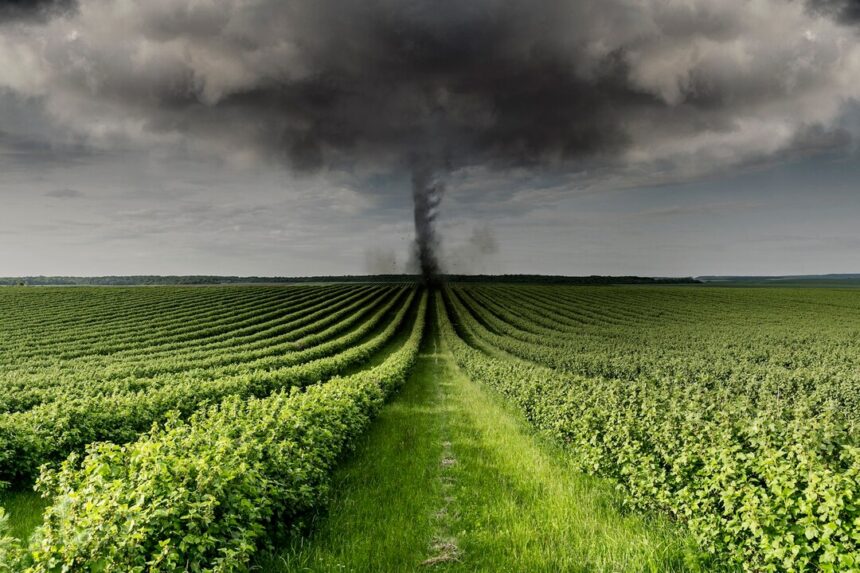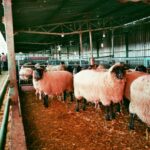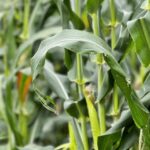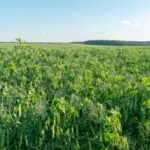Climate change poses a significant challenge to agriculture worldwide, and South Africa is no exception. Farmers face unpredictable weather patterns, droughts, floods, and other climate-related stressors that threaten food security and livelihoods. Adapting to these changes is essential, but many farmers unknowingly make mistakes that hinder their efforts. Here are 10 common mistakes South African farmers make in adapting to climate change and how to avoid them.
1. Ignoring Climate Data and Forecasts
Many farmers fail to use available climate data and forecasts to guide their decisions. Ignoring weather predictions or long-term climate trends can result in poor planning, crop losses, and wasted resources.
Solution: Regularly monitor reliable weather forecasts and climate reports. Tools like the South African Weather Service and agri-tech apps can provide real-time information for informed decision-making.
2. Planting the Same Crops Year After Year
Monocropping is a common practice, but it increases vulnerability to pests, diseases, and adverse weather conditions. Failing to diversify crops can lead to significant losses during extreme weather events.
Solution: Practice crop diversification by planting drought-tolerant or climate-resilient crops, such as sorghum or millet, alongside traditional crops. Rotate crops to improve soil health and reduce pest infestations.
3. Over-Reliance on Conventional Irrigation Methods
Traditional irrigation methods, such as flood irrigation, often lead to water wastage and inefficiency. This can exacerbate water scarcity, a growing problem in South Africa.
Solution: Invest in water-efficient irrigation systems like drip or sprinkler irrigation. Use soil moisture sensors to optimize water usage and reduce waste.
4. Neglecting Soil Health
Poor soil management practices, such as over-tilling or using excessive chemical fertilizers, degrade soil quality and reduce its ability to retain water and nutrients. This limits resilience to climate change.
Solution: Implement soil conservation practices such as minimum tillage, cover cropping, and organic amendments like compost or manure. These practices enhance soil fertility, structure, and water retention.
5. Delaying the Adoption of Technology
Some farmers are hesitant to adopt modern technologies that can help mitigate the effects of climate change. This resistance often results in inefficient farming practices and lower productivity.
Solution: Explore technologies such as precision farming tools, weather monitoring systems, and mobile apps for farm management. These innovations can improve resource efficiency and decision-making.
6. Overlooking Agroforestry and Biodiversity
Clearing trees and reducing biodiversity to expand farmland can make farms more susceptible to extreme weather and pests. It also reduces carbon sequestration, contributing to climate change.
Solution: Incorporate agroforestry practices by planting trees alongside crops and maintaining natural vegetation. This improves soil quality, provides shade, and reduces wind erosion.
7. Relying Solely on External Inputs
Farmers often depend heavily on synthetic fertilizers, pesticides, and herbicides to maintain productivity. While these inputs may provide short-term benefits, they can harm the environment and reduce long-term resilience.
Solution: Transition to sustainable farming practices, such as integrated pest management (IPM), organic farming, and natural fertilizers. These methods reduce environmental impact and enhance farm sustainability.
8. Failing to Build Water Resilience
Many farmers do not invest in water conservation strategies, leaving them vulnerable to droughts and water shortages. This mistake can lead to crop failures during prolonged dry periods.
Solution: Construct water storage systems, such as dams or tanks, to harvest and store rainwater. Mulching and contour farming can also help retain soil moisture and reduce water runoff.
9. Neglecting Financial and Insurance Planning
Farmers often underestimate the financial risks posed by climate change and fail to invest in crop insurance or diversify income sources. This leaves them financially vulnerable to climate-related disasters.
Solution: Obtain crop or livestock insurance to protect against losses. Diversify income by exploring value-added products, agri-tourism, or alternative crops suited to changing climates.
10. Failing to Collaborate and Learn
Some farmers try to tackle climate challenges in isolation, missing out on shared knowledge and resources. This limits their ability to adapt effectively.
Solution: Join farmer cooperatives, attend agricultural workshops, and engage with government or NGO initiatives focused on climate adaptation. Sharing knowledge and resources strengthens community resilience.
Key Strategies for Climate Adaptation
To avoid these mistakes and improve climate resilience, South African farmers can:
- Adopt Climate-Smart Agriculture: This includes practices like conservation tillage, crop rotation, and water-efficient technologies.
- Engage in Research and Training: Stay updated on climate trends and innovations through workshops, training programs, and online resources.
- Work with Experts: Collaborate with agricultural extension officers, climate scientists, and sustainability consultants to develop tailored strategies.
- Access Funding and Support: Explore grants
and subsidies offered by the South African government, NGOs, and international organizations to implement climate-smart practices. Programs such as the Comprehensive Agricultural Support Programme (CASP) provide financial and technical assistance to farmers.
Adapting to climate change is not just a necessity; it’s an opportunity for South African farmers to enhance productivity, sustainability, and resilience. By avoiding these common mistakes and adopting sustainable practices, farmers can safeguard their livelihoods while protecting the environment for future generations. Collaboration, innovation, and a proactive approach are key to thriving in an era of climate uncertainty.
Join 'Farmers Mag' WhatsApp Channel
Get the latest Farming news and tips delivered straight to your WhatsApp
CLICK HERE TO JOIN






